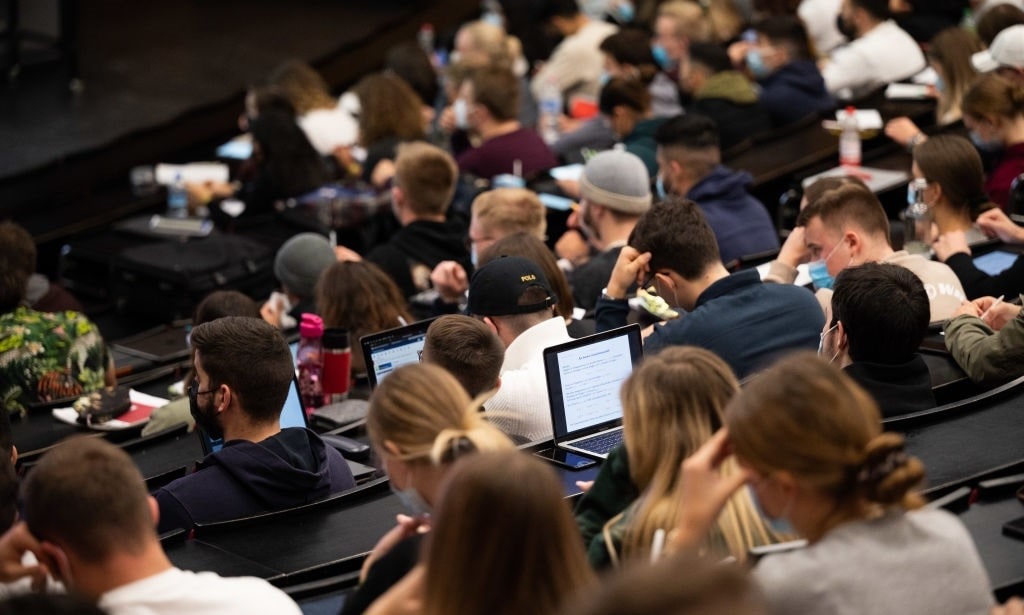Is a college degree important? That question has been bantered around for decades, with the biggest contention being whether the cost for education is worth it. Now, however, a new study adds another element; those without degrees have shorter lifespans. The mortality rate between those with a four-year degree compared to those without is widening so alarmingly that America is falling behind other rich countries in life expectancy. What is causing this? Some suggest Republicans are to blame.
College Degree Mortality Rate
The new study, “Accounting for the Widening Mortality Gap between American Adults with and without a BA” from Princeton economists Anne Case and Angus Deaton, was featured in the fall 2023 Brookings Papers on Economic Activity. It compared information regarding the lifespans of the undereducated from 1992 to 2021.
The life expectancy of people 25 or older who had a four-year degree was 79 years in 1992. Those without degrees didn’t fare much worse, with an average lifespan of 77 years. The gap widened considerably over time, however. By 2021, the life expectancy was 79 years for people with degrees and just 75 for those without.
Case called this divide “both shocking and rare,” adding that she and co-author Deaton, who won the 2015 Nobel Prize in economics, haven’t seen this kind of decline in modern history. They compare it to the “former Communist countries of Eastern Europe after the collapse of the Soviet Union,” Forbes reported. “Like those countries, the United States is failing its less educated people, an awful condemnation of where the country is today,” she wrote in the study.
While life expectancy has generally increased, there has been a steady decline in the US in recent years, as National Academies pointed out:
“In 2010, however, progress in life expectancy in the United States began to stall, despite continuing to increase in other high-income countries. Alarmingly, U.S. life expectancy fell between 2014 and 2015 and continued to decline through 2017, the longest sustained decline in life expectancy in a century (since the influenza pandemic of 1918-1919).”
According to Proceeding of the National Academy of Sciences:
“The United States has recently witnessed a widening of health inequalities due to rising mortality and morbidity among the lowly educated. Our study shows that, despite the financial crisis, most European countries have experienced an improvement in the health of the lowly educated in recent years. In Eastern Europe, this even represents a reversal as compared with previous decades. The 2008 financial crisis has had mixed effects without widening health inequalities. Our results suggest that European countries have been successful in avoiding an aggravation of health inequalities.”
In an interview with The Brookings Institution, Case said: “GDP may be doing great, but people are dying in increasing numbers, especially less-educated people. A lot of the increasing prosperity is going to the well-educated elites. It is not going to typical working people.”
Case and Deaton claim “indirect forces” are to blame for the college degree mortality gap, including “the negative effects on health of corporate-sponsored laws passed in Republican-controlled state legislatures” that involve lower minimum wages, climate control, right to work laws, and even guns.
Education Woes

(Photo by Sarah Reingewirtz/MediaNews Group/Los Angeles Daily News via Getty Images)
Getting an education, though, is expensive. Admissionsly claims there are many factors that go into determining the cost of a college degree, including housing, tuition, the facility, etc., but “the average cost of education (overall) in 2019-2020 for a 4-year private nonprofit college is $199,500, for a 4-year public in-state college is $87,800, and for a 4-year public out-state college is $153,320.”
Those costs are based on students actually finishing in four years. “[S]tudies showed that only 39% of students finish in this period, and nearly 60% of undergraduate students take on average 6 years to finish the 4-year college – meaning the average price for them will be much higher,” Admissionsly explained.
Still, compared to a few decades ago, more Americans are getting higher education. Statista Research Department said: “In 2021, about 37.7 percent of the U.S. population who were aged 25 and above had graduated from college or another higher education institution, a slight decline from 37.9 the previous year. However, this is a significant increase from 1960, when only 7.7 percent of the U.S. population had graduated from college.”
Dumbing Down America

(Photo by Julian Stratenschulte/picture alliance via Getty Images)
The value of a college degree is losing its appeal. A 2013 Gallup poll found that 70% of US adults considered a college education “very important,” but that dropped to only 51% by 2019, and 44% in 2021. So, what is driving this decline, besides the high costs?
A college degree is becoming less valuable. “One big driver of these trends are companies like Apple, Tesla, IBM, Delta Airlines, and Hilton, who no longer require a college degree for an interview,” Harvard Business Review wrote.
Another contributing factor is Democrat-led proposals to remove degree requirements. Governor Josh Shapiro (D-PA), for example, signed an executive order to remove four-year college degree requirements for state government jobs. Georgia and Alaska followed suit, and Colorado, Maryland, and Utah already had similar policies in place.
Quality of life is important, and income plays a large role in that. Obtaining a college degree is one way to achieve higher paying jobs that provide better benefits, access to healthcare, and other necessities. While the mortality rate between people with four-year degrees and those without continues to grow, is the best solution really to make education less of a priority?




